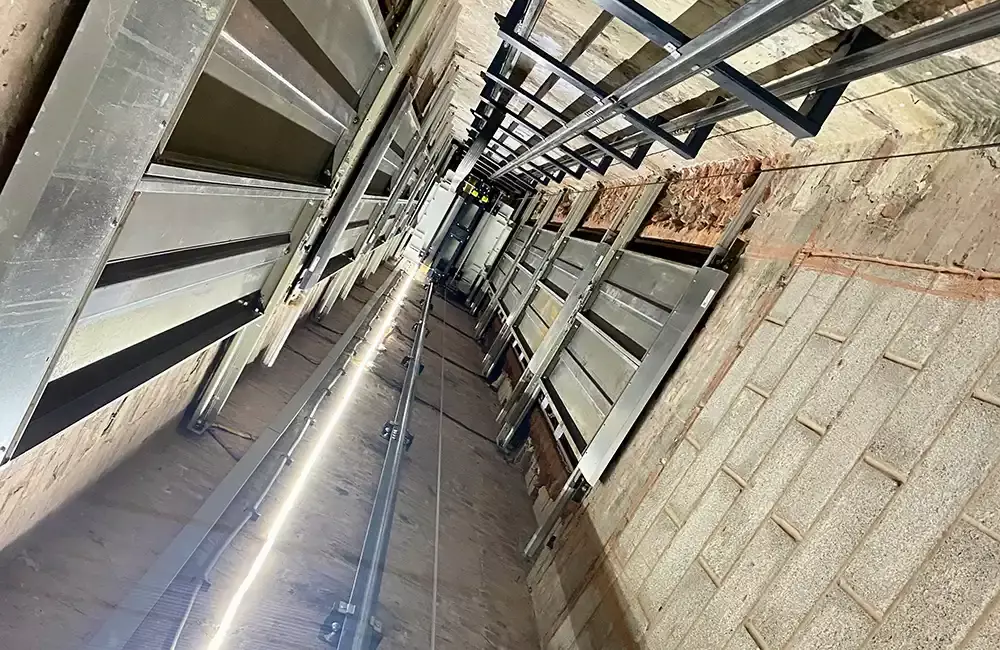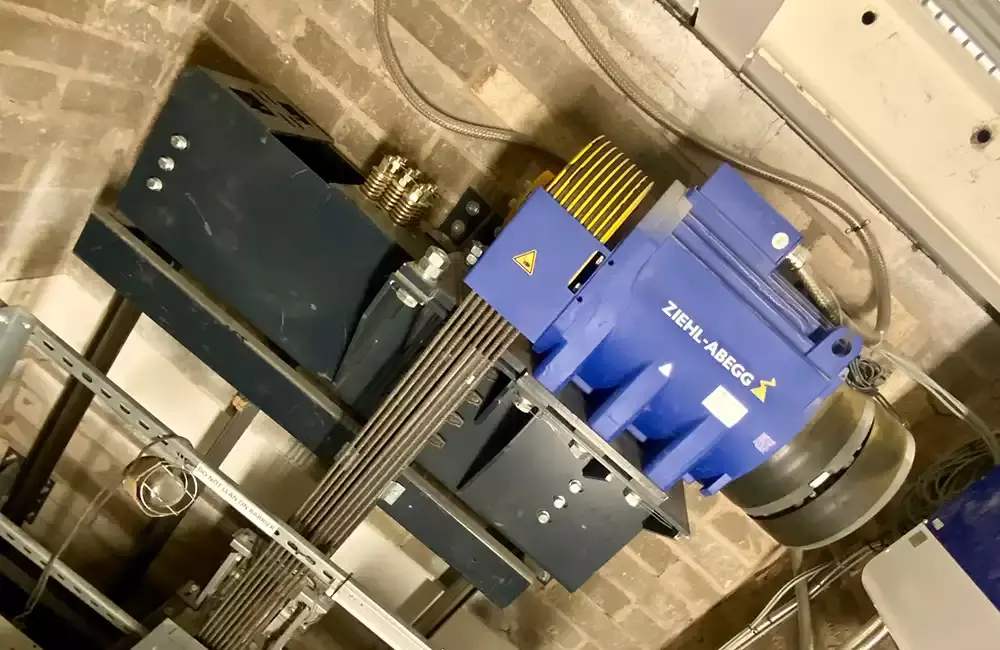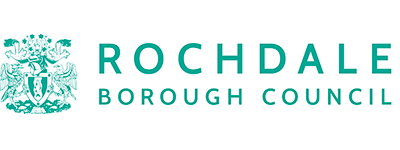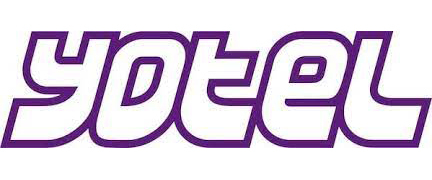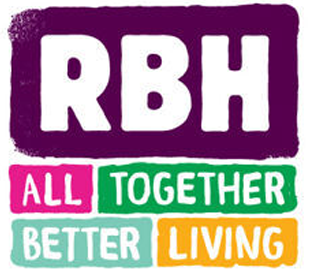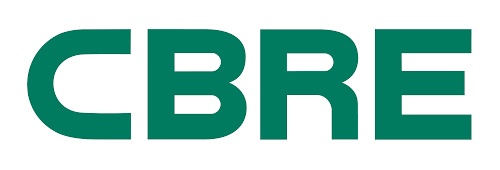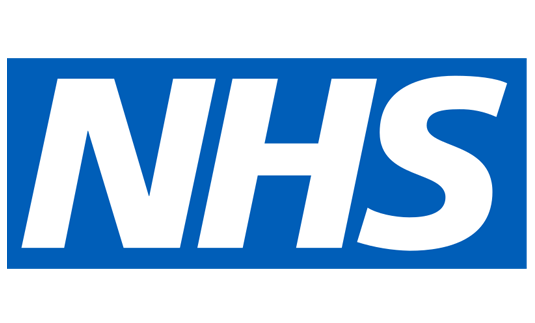Traction Lifts
Traction lifts, renowned for their sturdiness and reliability, are commonly used to transport passengers in commercial settings. Operating on a system of ropes and pulleys, traction lifts offer smooth vertical transportation, making them ideal for high-traffic areas such as office buildings, hotels, and shopping centres
Low Pit Lifts
Low pit lifts are specifically designed to accommodate buildings with limited space constraints. Featuring a shallow pit requirement compared to traditional lifts, low pit lifts offer an efficient solution for properties where excavation for a deep pit is not feasible. These lifts are often preferred in retrofit projects or buildings with basement levels.
Hydraulic Lifts
Hydraulic lifts are prized for their robustness and efficiency. They use hydraulic fluid to power the lifting mechanism and are known for their smooth ride quality and minimal maintenance requirements. Hydraulic lifts are commonly installed in commercial properties where reliability and energy efficiency are paramount.
Machine Room-Less (MRL) Lifts
Machine room-less (MRL) lifts are revolutionising the commercial lift industry with their space-saving design and modern aesthetics. Unlike traditional lifts that require a separate machine room for housing the lift machinery, MRL lifts integrate the equipment within the shaft structure, maximising usable space in the building. This innovative design makes MRL lifts an attractive choice for architects and property developers seeking sleek, contemporary lift solutions for their commercial projects.
Understanding the distinct characteristics and advantages of each type of commercial lift is crucial for property managers looking to enhance vertical transportation within their buildings. Businesses can ensure efficient and reliable mobility for their tenants and visitors by choosing the right lift type.
Commercial Lift Installation Process
Installing a commercial lift is a meticulous process that requires careful planning, coordination, and expertise. The comprehensive nature of this process, which includes understanding the timeline and considerations involved, should reassure property managers about the quality of work and the attention to detail involved in the installation of a new lift in their commercial properties.
-
A typical commercial lift installation takes six to ten weeks to complete. However, the exact duration may vary depending on various factors, such as the height of the building, accessibility to the installation site, and the complexity of features or functionalities required for the lift.
-
Several factors can influence the duration of the installation process:
- Height of the Building: Taller buildings may require more time for installation due to the additional components and structural considerations involved.
- Accessibility: Limited access to the installation site can pose challenges and may require additional time for equipment and materials to be transported to the designated location.
- Complexity of Features/Functionality: The complexity of the lift's features and functionalities, such as custom cabin designs, unique safety features, or advanced technology integrations, can impact the installation timeline.
-
The installation process typically follows these key steps:
- Site Preparation: This involves assessing the installation site, ensuring proper structural support, and preparing for the lift installation.
- Delivery and Unloading: The lift components are delivered to the site, unloaded, and made ready for installation.
- Assembly and Installation: Skilled technicians, who are a minimum of NVQ 3 qualified assemble the lift components according to the manufacturer's specifications and install them within the designated shaft space.
- Wiring and Electrical Connections: Electrical wiring and connections are installed to power the lift system and integrate any additional features or safety mechanisms.
- Testing and Commissioning: Once installed, the lift undergoes thorough testing and commissioning to ensure proper functionality, safety compliance, and smooth operation.
- Final Inspection and Handover: A final inspection is conducted to verify that the lift meets all regulatory requirements and safety standards. Upon completion, the lift is handed over to the property manager for regular operation.
Property managers can effectively plan to install a new commercial lift in their buildings by following a checklist or timeline that includes the key steps and their respective durations. This will ensure a smooth and successful transition to improved vertical transportation.
Maintenance Procedures
Regular maintenance is not just a task, but a responsibility that ensures a commercial lift's safety, reliability, and optimal performance. By adhering to a structured maintenance schedule and conducting key tasks, property managers can take a proactive role in prolonging the lifespan of their lifts and minimising the risk of unexpected breakdowns or safety hazards, fostering a sense of responsibility and proactiveness.
-
Commercial lifts should undergo maintenance at regular intervals to ensure their continued functionality. To schedule these visits, property managers can get in touch with our team via phone, email, or completing our online form. All of these details can be found on our Contact page. While passenger lifts typically require at least two service visits per year, we recommend increasing the frequency to four, six or twelve visits annually for optimal performance, especially in high-traffic areas or large buildings. In some cases, such as very tall buildings or high-rise hotels, monthly services may be necessary to maintain lift efficiency and safety.
Key Maintenance Tasks
- During maintenance visits, technicians perform a range of tasks to ensure the lift's functionality and safety. Monthly maintenance tasks include:
- Cleaning the lift shaft, pit, car top and interior.
- Testing door operations for smooth opening and closing.
- Making levelling adjustments to ensure precise floor alignment.
- Additionally, thorough examinations, including checks on critical components such as brakes and emergency systems, are conducted annually to identify potential issues or safety concerns.
-
Regular maintenance plays a crucial role in preserving the safety and performance of commercial lifts. By identifying and addressing minor issues before they escalate into significant problems, maintenance helps reduce the risk of lift malfunctions, breakdowns, and safety hazards. Moreover, proactive maintenance minimises downtime, ensuring uninterrupted vertical transportation for building occupants and visitors. Not adhering to the maintenance schedule can lead to premature failure of components.
-
Statutory regulations mandate regular maintenance and thorough examinations of commercial lifts to ensure compliance with safety standards and regulations. Adhering to legal requirements ensures lift safety and protects property managers from potential liabilities and penalties.
By prioritising regular maintenance and adhering to legal requirements, property managers can uphold commercial lifts' safety, reliability, and performance, providing a seamless vertical transportation experience for building occupants and visitors alike.
Safety Inspections
Safety inspections play a critical role in maintaining the reliability and safety of commercial lifts, ensuring the well-being of passengers and compliance with regulatory standards. Property managers can identify and address potential issues by conducting thorough inspections at regular intervals before they escalate into safety hazards or operational disruptions.
-
Safety inspections comprehensively evaluate various critical aspects of lift operation, including door operations, acceleration, deceleration, and levelling. Technicians meticulously examine the lift's components, mechanisms, and safety systems to verify their functionality and adherence to safety standards.
-
Safety inspections should be conducted regularly to uphold safety standards and regulatory compliance. While the frequency may vary depending on regulatory requirements and lift usage, commercial lifts typically undergo safety inspections at least once a year. Additionally, more frequent inspections may be necessary for lifts in high-traffic areas or buildings with specific safety considerations.
-
Neglecting safety inspections can have serious consequences, including malfunctions, breakdowns, and potential safety hazards for passengers and building occupants. Minor issues may go unnoticed without regular inspections and escalate into major problems, leading to operational disruptions and costly repairs.
-
Qualified professionals with expertise in lift maintenance and safety regulations should conduct safety inspections for commercial lifts. According to legal requirements, LOLER (Lifting Operations and Lifting Equipment Regulations) inspections must be performed by third-party inspectors independent of the company responsible for lift installation or maintenance. These qualified inspectors ensure impartial evaluations and uphold compliance with safety standards.
-
Regular safety inspections are essential for upholding compliance with safety regulations, ensuring passenger confidence, and minimising the risk of operational disruptions. By proactively identifying and addressing potential safety concerns, property managers can maintain the reliability and performance of their commercial lifts, providing a safe and efficient vertical transportation experience for building occupants and visitors.
Troubleshooting and Repairs
Addressing issues promptly and effectively is crucial for maintaining the functionality and safety of commercial lifts. Property managers and lift operators should be vigilant for signs indicating potential problems and respond promptly to minimise disruptions and ensure passenger safety. Here's a detailed look at troubleshooting standard lift issues and the process for repairs:
-
Commercial lifts may exhibit signs indicating potential malfunctions or issues, such as unusual noises, sudden stops, jerky movements, or failure to respond to commands. Any deviation from regular lift operation should be reported immediately to the maintenance company to prevent further complications and ensure passenger safety.
-
In the event of a lift malfunction or breakdown, operators should follow established protocols and promptly report the issue to the lift maintenance company. Fast reporting allows technicians to assess the situation, identify the root cause of the problem, and initiate necessary repairs or interventions to restore lift functionality and ensure passenger safety.
-
Troubleshooting lift issues involves a systematic approach to diagnose and address the underlying problems. Technicians may conduct comprehensive inspections to identify any abnormalities or malfunctions, including checks on electrical systems, mechanical components, and hydraulic mechanisms. This process may also involve reviewing lift operation logs, conducting performance tests, and consulting with manufacturers or experts for guidance.
-
While some lift issues may be resolved through routine maintenance or minor adjustments, complex repairs or component replacements require the expertise of professional technicians. Trained professionals have the knowledge, skills, and specialised tools necessary to address complex lift issues safely and effectively, minimising downtime and ensuring the longevity of lift systems.
In addition to the above points, troubleshooting lift issues may involve assessing environmental factors, such as temperature fluctuations or humidity levels, which can impact lift performance. Regular inspection of lift components, including doors, safety sensors, and control panels, helps identify potential issues early and prevent costly repairs. Property managers can ensure the continued functionality and safety of commercial lifts in their buildings by prioritising proactive maintenance and prompt response to lift malfunctions.

